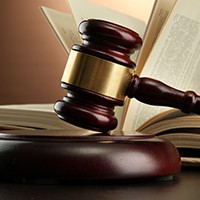Last updated: October 06 2015
Family Dynamics Aside, Income Was Reportable

An argument that is mathematically possible will not avail a taxpayer who is found by the Court not to be credible. That was the unfortunate result for a taxpayer who took on CRA in a case of unreported income.
In any tax case where there is a suspicion that a taxpayer has unreported income, the onus is on the Crown to prove that is so, based on a balance of probabilities. However, once it is established that there is a substantial discrepancy between a taxpayer's assets, expenses and declared income, the onus of proving the case is essentially reversed: the taxpayer must then identify the source of income and show that it is not taxable to avoid being penalized.
Tax specialists can be instrumental in helping their clients to build a case that will stand up in court, if taxpayers are astute enough to ask for help. As we shall see, not seeking this kind of professional assistance and advice can have serious negative consequences for the taxpayer accused of unreported income.
In Agostini v. The Queen, although the explanation for a large discrepancy between the taxpayer’s assets, expenses, and reported income was mathematically possible, it was not believable in the final outcome, thanks to some very strange family dynamics and a lack of professional advice.
In this case, Mr. Agostini was the subject of a Net Worth Assessment by the CRA (permitted by subsection 152(7) of the Income Tax Act). Subsection 152(8) grants a presumption of validity to these assessments and places the initial onus upon the taxpayer to disprove the state of affairs assumed by the Minister.
Mr. Agostini attempted to do so after a bank deposit analysis by Canada Revenue Agency. The CRA asserted that Mr. Agostini failed to report income of approximately $105,000 for 2007 and $160,000 for 2008. The CRA also denied business expenses in the amounts of approximately $15,000 in 2007 and $17,500 in 2008 and applied gross negligence penalties under subsection 163(2), in respect of the unreported income. The penalties were in the amounts of $15,000 for 2007 and $20,000 for 2008.
 > > |
Mr. Agostini testified on his own behalf in the appeal, and brought along his mother and his wife for help. A short quote from the third paragraph of this well written decision communicates the unusual facts and circumstances of this case. The Honourable Justice Patrick Boyle stated:
His attempts to corroborate his versions with supporting testimony from his mother and his wife backfired spectacularly when neither of their evidence supported his testimony about living with his mother to amass large savings, his parents paying all of his personal expenses as an adult right down to choosing his clothes, receiving up to $35,000 in cash gifts at his wedding, or keeping a safe with up to $140,000 in it in cash in his mother’s garage and then later in the home he shared with his wife and their daughter.
In his reasons for judgment, Mr. Justice Boyle quoted himself from a judgment he made earlier this year (Sbrollini v. The Queen):
The taxpayer must satisfy the Court that his or her explanation for not reporting the additional income, whatever the reason is, was itself reasonable for the particular taxpayer in the particular circumstances at the time of filing his or her return, on a preponderance of the evidence relevant to his or her explanation.
Unfortunately, Mr. Agostini was not able to satisfy the Court with his explanation for not reporting the additional income: that it was reasonable in the circumstances at the time of filing his returns.
In summary, although the onus is on the Crown to prove that a false tax return was filed knowingly or under circumstances amounting to gross negligence, that onus is reversed when the facts reveal major discrepancies between what was claimed by the taxpayer and the assets that a taxpayer possesses.
Greer Jacks practices law in Victoria and contributes to the update of EverGreen Explanatory Notes and the Use of Trusts in Tax and Estate Planning course from Knowledge Bureau.
